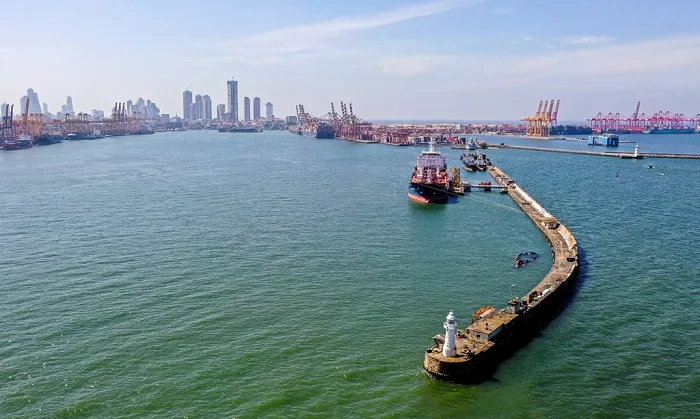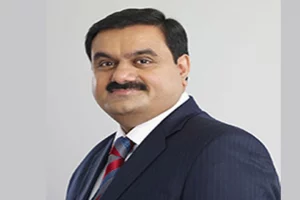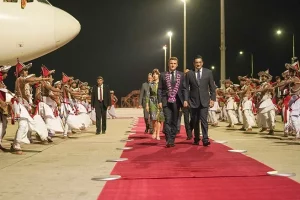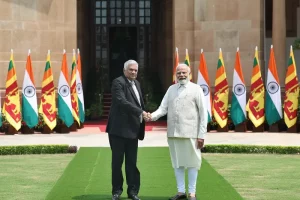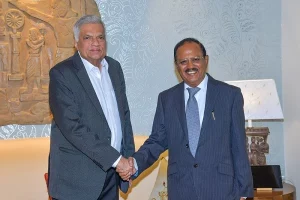Just a few hours before he held crucial discussions with Prime Minister Narendra Modi at the Hyderabad House in New Delhi, visiting Sri Lankan President Ranil Wickremesinghe began Friday with two significant meetings.
The first, as reported by IndiaNarrative.com, was with the National Security Advisor (NSA) Ajit Doval who leads India’s maritime security cooperation with the Indian Ocean countries through initiatives like Colombo Security Conclave (CSC) that are in consonance with the government’s vision of Security and Growth for All in the Region (SAGAR) and ‘Neighbourhood First’ policy.
Wickremesinghe’s second interaction was with Indian business tycoon Gautam Adani whose company Adani Ports and Special Economic Zones Limited (APSEZ) – a key subsidiary of the diversified Adani Group – is currently involved in development of the West Container Terminal (WCT) of the Port of Colombo (POC) at an estimated cost of $789 million.
The 35-year Build-Operate-Transfer (BOT) agreement – the largest foreign investment ever in the port sector of Sri Lanka – was signed between the Sri Lanka Ports Authority (SLPA), Adani Group and John Keells Holdings in September 2021 with the construction work beginning in November 2022.
Once completed within 24 months, the project is expected to boost Colombo Port’s capacity by a further 3 million Twenty-foot Equivalent Units (TEUs) and will be another shining example of India’s massive ongoing support to Sri Lanka as the island country struggles to emerge from a major economic crisis.
It will also further consolidate Sri Lanka’s locational advantage as one of the world’s top strategic nodes along the busiest global transhipment route.
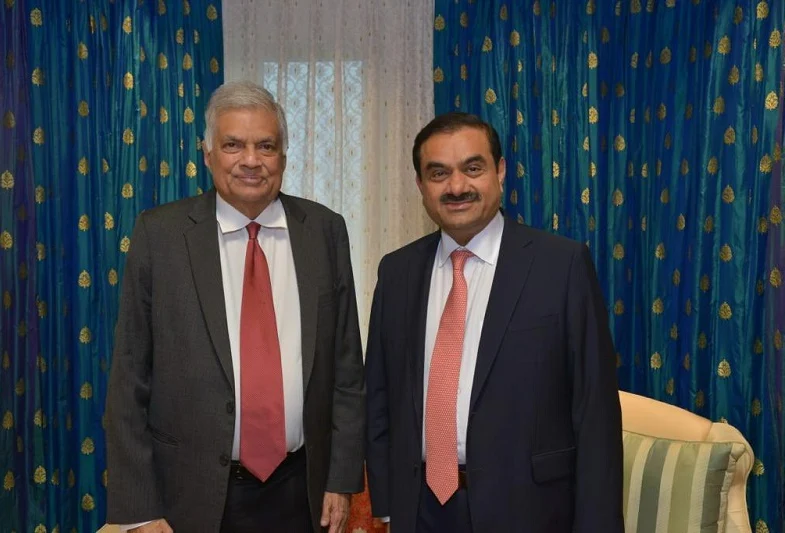
“Great Honour to have met H.E. President Ranil Wickremesinghe to discuss a fascinating set of projects in Sri Lanka including continued development of Colombo Port West Container Terminal, 500 MW wind project, and extending our renewal energy expertise to produce green Hydrogen,” tweeted Adani after meeting Wickremesinghe, earlier today.
The Colombo Port is already the most preferred regional hub for transhipment of Indian containers and mainline ship operators with 45% of Colombo’s transhipment volumes either originating from or destined to an Adani port terminal in India.
It is to be recalled that India, Japan and Sri Lanka were to also jointly develop the Colombo Port’s East Container Terminal and had signed a Memorandum of Cooperation in 2019.
However, two years later, the Mahinda Rajapaksa government took a U-turn and scrapped the agreement which analysts believed was a result of persistent external pressure applied by China which had developed high stakes in the country through its “expansionist and debt trap” Belt and Road Initiative (BRI).
India now hopes that Wickremesinghe’s visit to New Delhi, his first since assuming the current responsibilities, will reinforce the longstanding friendship between the two countries and explore avenues for enhanced connectivity and mutually beneficial cooperation across sectors.
Sri Lanka, in particular, continues to seek more collaborations with India, specifically in the northern Jaffna Peninsula and Trincomalee on the northeast coast of the country.
Both Jaffna and Trincomalee are largely inhabited by Tamils and suffered massive devastation during the bloody Lankan civil war that lasted for more than 25 years.
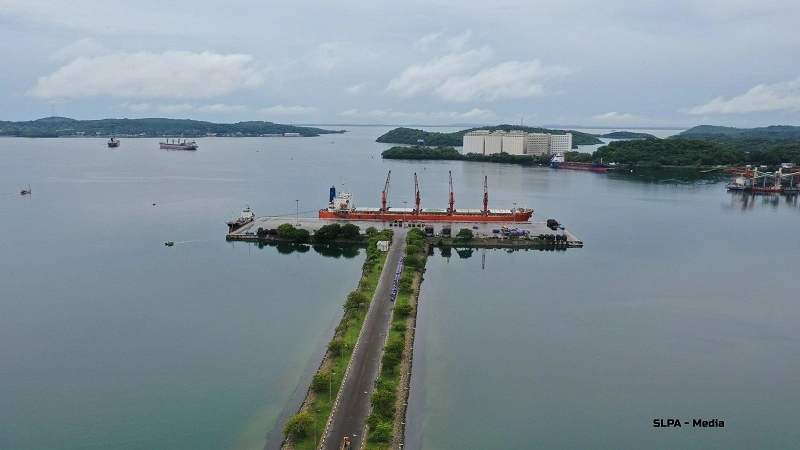
While Jaffna served as an important strategic location for the Lankan military forces in the northern theatre during its long conflict with the LTTE, the Trincomalee Harbour is the fifth largest natural harbour in the world, strategically located in the heart of the Indian Ocean with the Portuguese, Dutch, French, and English having fought many sea battles to conquer it.
Last month, Keith Bernard, the Chairman of the Sri Lanka Ports Authority (SLPA), met with Gopal Baglay, the Indian High Commissioner in Colombo, to discuss the advancement of maritime connectivity between the two nations.
Baglay expressed India’s keen interest in participating in future development plans initiated by the Port of Colombo and discussed enhancing collaboration to facilitate faster ferry and cruise services connecting India and Sri Lanka.
This week, Bernard landed in Tuticorin along with a high profile delegation which included representatives from SLPA, South Asia Gateway Terminals, and the Colombo International Container Terminals on a three-day visit.
“Both the Colombo and Tuticorin ports, situated in the Indian Ocean region, hold strategic importance as key maritime trade hubs. Establishing a commercial shipping trade relationship between these ports presents numerous opportunities for collaboration and growth,” the SLPA chairman said at a trade interactive session on establishing a robust networking system between the Colombo port and Tuticorin.
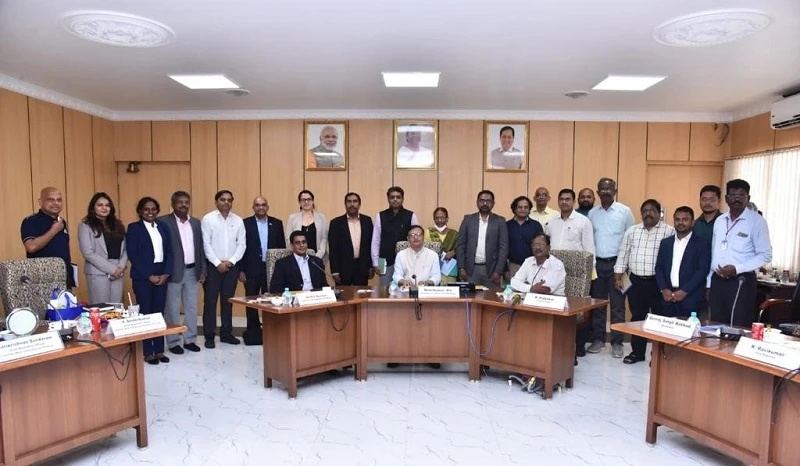
The duration of sea travel between Tuticorin and Colombo typically ranges from 12 to 18 hours. According to SLPA, Colombo has welcomed a total of 98 container vessels through the Tuticorin Service from January to May of this year, resulting in a volume of 92,265 TEUs.
“Due to increased efficiency and productivity, it is expected that this figure will surpass the total volume of 271,179 TEUs handled in the previous year, which was achieved through 161 vessel calls under the same service,” said Bernard.






